Extracting, transforming, and reading data using Best ETL tools is gaining popularity for streamlining data management.
In this article, we explain in detail what ETL tools are, why they are necessary, what they can achieve, You can choose the best ETL tool based on this information.
What is an ETL tool?
An ETL tool is a software tool that extracts, transforms, and loads data efficiently.
Data is extracted from a data warehouse or database, converted and formatted as needed, and then loaded or written to another database or data warehouse. As a result, companies can manage large amounts of data efficiently to support business decisions.
ETL tools are required
Companies handle a great deal of data, which needs to be managed and utilized appropriately. In your company, you can use ETL tools to manage various types of information consistently.
For example, you want to move data from one source to a data warehouse. Some data overlaps, there is a change in the notation, or there is a lack of data at that time.
Transferring data as is in such cases is impossible, and the data must be converted and formatted. This can be automated with ETL tools.
Manually processing large amounts of data is time-consuming and prone to errors. This can also be prevented with ETL tools. It would help if you had an ETL tool to analyze data quickly and make business decisions.
How ETL tools can be used

Three processes are involved in ETL tools:
- Data extraction
- Data conversion
- Data export
We will now discuss ETL tools in more detail.
Data extraction
Various data sources extract information from an ETL tool’s data extraction feature. Databases, CSV files, and Web APIs are all examples of data sources companies can access for data extraction.
The process involves:
- Retrieving data from a data source.
- Parsing the syntax.
- Determining whether the data is suitable.
A mistake in data extraction can affect the entire ETL process, so this step is crucial.
Data conversion
Data transformation is the second function of ETL tools. A process is performed to transform the format and structure of data to accommodate systems with different data formats. Formats for dates, numbers, characters, etc.
Data extraction may not need to be converted to an exportable format if the data has already been converted to DWH.
Transforming data ensures that the original meaning is preserved. You only need to convert the format, not the original data. Data quality may be compromised if conversion rules are not set correctly.
Data export
ETL tools export the transformed data to their final storage location as part of the data export process. Data warehouses and databases are common storage locations. The data’s size and format must be considered when choosing an export method.
Moreover, if the destination database cannot handle a large amount of data simultaneously, you may need to divide and export the data.
ETL tools automate all of these tasks. As a result, efficient data management can be achieved while maintaining data consistency.
How to choose an ETL tool
I will explain each of the four points individually as we choose an ETL tool.
- Choose from a variety of adapters and connectors
- Easy-to-use is the best choice
- You should pick one based on the volume of data your company handles
- Make sure the price can be used continuously
Choose from a variety of adapters and connectors.
ETL tools should have various adapters and connectors when choosing them. Connectors and adapters connect data between different systems and data sources.
Having a variety of data sources allows you to extract information from them and send it to different systems. Business efficiency and value creation will be greatly enhanced as a result of this expansion of data utilization.
Information about the types of adapters and connectors can be found on the official websites, catalogues, and technical documentation of each ETL tool. Based on this information, you would help if you chose the ETL tool that best suits your company’s data integration needs.
Easy-to-use is the best choice
Choosing an ETL tool that is easy to use is also important.
Having something profoundly simple to utilize implies it may be utilized naturally, doesn’t need complex settings or coding, and permits clients to push ahead without interference.
A basic ETL tool will permit you to continue your work without pressure, even after you introduce it to your organization, and the device will be all the more broadly utilized.
If a free trial or demo version is provided, using your hands effectively checks usability. To understand how the product is used by other users, any problems, and ease of use, it is also important to read user reviews and ratings.
You should pick one based on the volume of data your company handles
The amount of data your company handles should be considered when selecting an ETL tool.
Data loss or slow processing speed may result if you choose a tool that cannot handle the amount of data.
A lack of capacity will also require you to select a new tool if the amount of data increases, which increases time and costs. It is recommended to consider future data growth when choosing an ETL tool and the current amount of data.
To understand the tool’s scalability and data processing capabilities, it is vital to review its specifications and product description. To confirm, you can also contact the vendor directly.
Make sure the price can be used continuously.
When choosing one, you would help if you chose an ETL tool with a price you can afford on an ongoing basis.
In addition, ETL tools are designed to be used for a long time once introduced. Therefore, you should also consider the operating costs and the initial cost. The total cost will be high even if the initial cost is low.
As well as cutting back on other business expenses, high running costs may force you to cut back on other expenses.
To select an ETL tool that can be used continuously within your budget, it is important to understand the total cost of the tool, including not only the initial cost but also the operational cost for continued use.
Best ETL Tools
1. AWS Glue
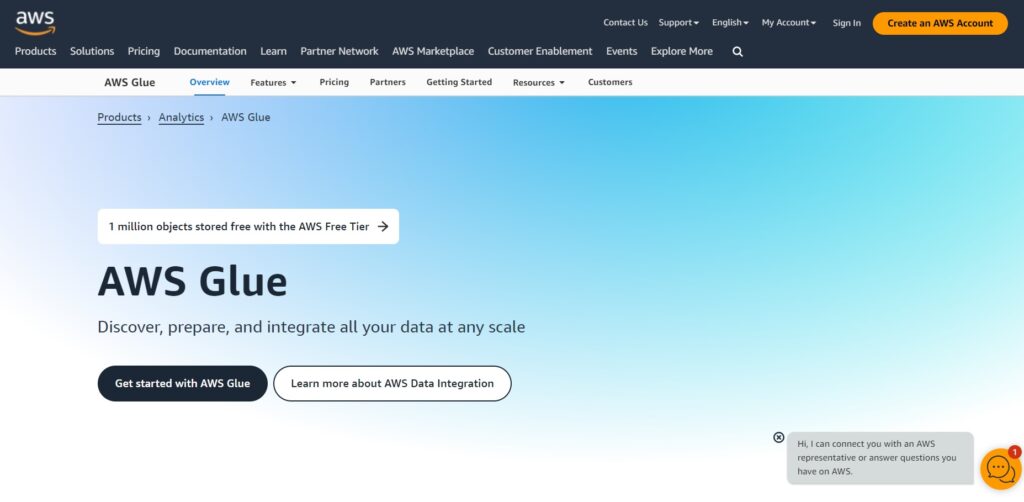
Information handling utilizing AWS Glue, a serverless ETL tool given by Amazon, is productive while handling a lot of information. The cloud-based instrument requires no framework to be set up, and information can be connected following establishment.
As a result, time and costs can be reduced significantly, contributing to the efficiency of the business. Additionally, AWS Glue is especially recommended for companies that want to select an ETL tool carefully. This is due to its combination of functionality and scalability. As your business grows, these characteristics allow us to be flexible.
| Tool | AWS Glue | Installation | Cloud |
| Initial cost | Estimate required | Monthly cost | Estimate required |
| Free trial | can be | Official site | https://aws.amazon.com/glue/ |
2. Reckoner
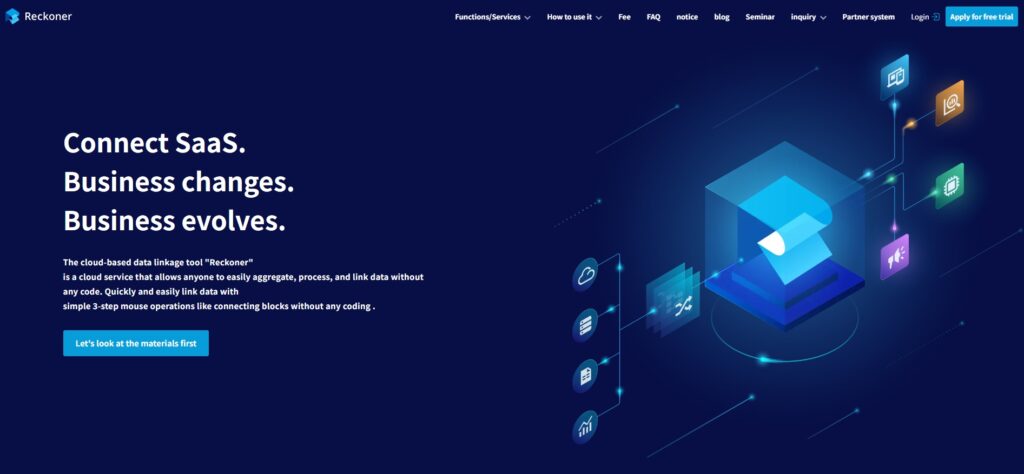
Three Shake’s Reckoner is attractive as a cloud-based ETL tool since it can be implemented without any initial investment. From research to design, testing, and infrastructure construction, it does not require specialized knowledge or batch production.
Creating a workflow in Reckoner is the only step required to ensure smooth data integration. Reckoner is highly recommended for companies implementing ETL tools for the first time due to its ease of use and low burden.
| Tool | Rockons | Installation | Cloud |
| Initial cost | 0$ | Monthly cost | 200$ |
| Free trial | can be | Official site | https://reckoner.io/ |
3. ASTERIA

The ASTERIA tool provides no-code ETL functionality.
This tool can link data between different computer systems, from mainframes to cloud servers to spreadsheet software. The logic for data transformation can also be implemented without complex programming. As a result, business automation and data exploitation can be achieved quickly.
As a result, ASTERIA can be considered a tool that facilitates quick collaboration between various systems and services, improves business efficiency, and optimizes data utilization.
| Tool | ASTERIA | Installation | on-premises |
| Initial cost | 0$ | Monthly cost | 200$ |
| Free trial | can be | Official site | https://en.asteria.com/ |
4. Waha! Transformers
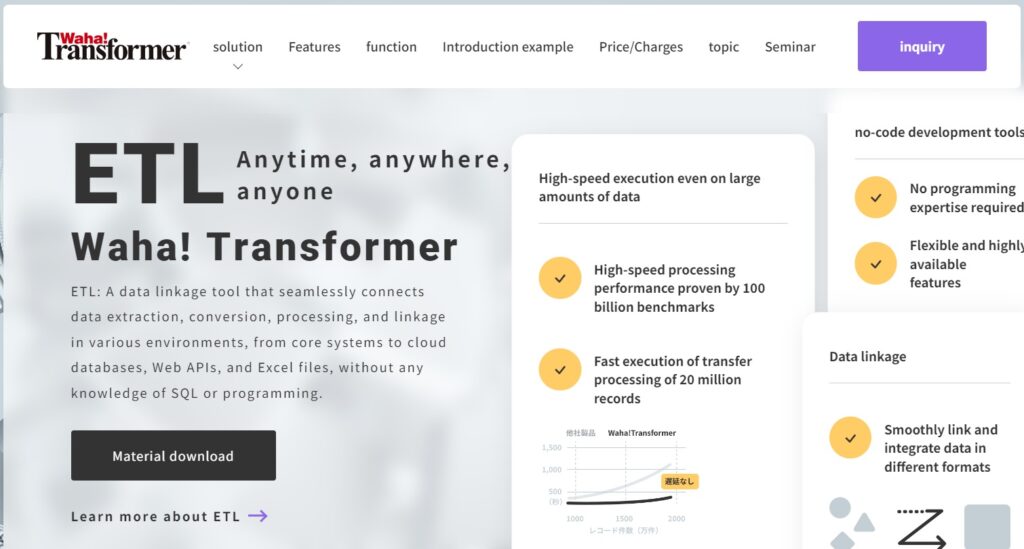
Waha! Transformer is characterized by its easy-to-use operability, and lack of programming required by Unirita Co., Ltd., Our support team is available to help even new users get started. In addition, it can process 1 billion pieces of data at high speeds.
Large companies linking large amounts of data daily will benefit greatly from this. This tool is recommended for companies handling large amounts of data and those using ETL for the first time.
| Tool | Waha!Transformer | Installation | On-premises/cloud |
| Initial cost | 0$ | Monthly cost | 270$ |
| Free trial | can be | Official site | https://waha-transformer.com/ |
5. IBM DataStage
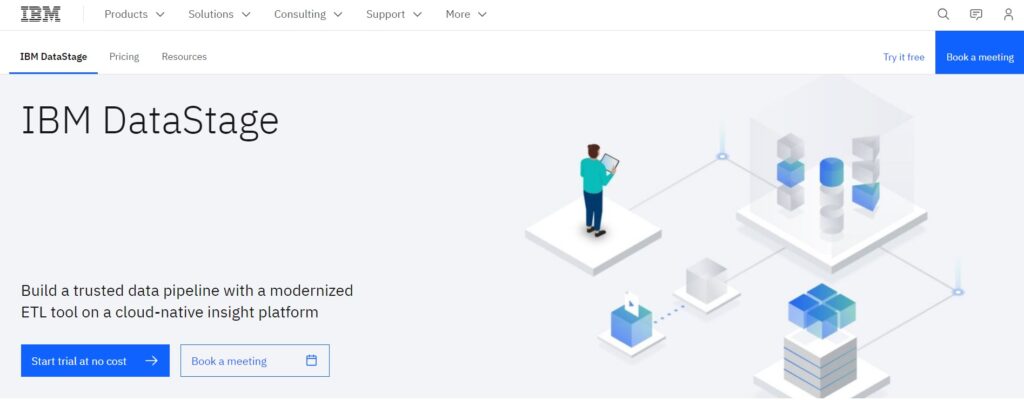
“IBM Cloud Pak for Data” can be used with IBM InfoSphere DataStage, the ETL tool provided by IBM.
It features a highly functional parallel processing engine and load-balancing capabilities. As a result, even large amounts of data can be processed quickly and efficiently in parallel.
A further advantage of using AI for data management and analysis is that it supports the effective use of data. The IBM Cloud Pak for Data ETL tool is highly recommended for companies that use it as their core data management system.
| Tool | IBM InfoSphere DataStage | Installation | Cloud |
| Initial cost | Inquiry required | Monthly cost | Inquiry required |
| Free trial | can be | Official site | IBN DataStage |
6. DataSpider Cloud
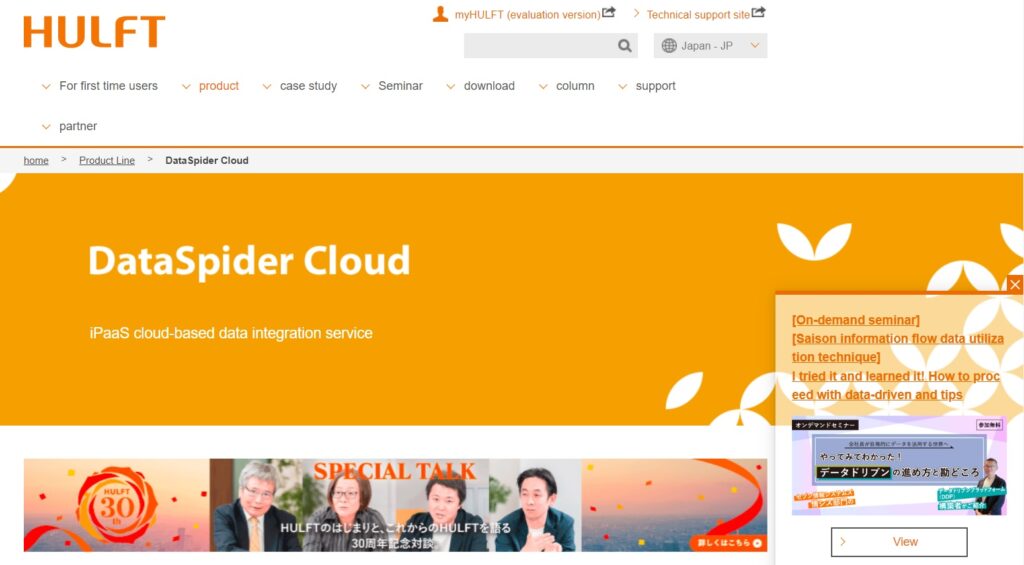
DataSpider Cloud is a cloud-based data linkage service offered by Saison Information Systems. This tool requires no coding; it can be used with cloud services and hybrid integrations with on-premises applications.
It allows companies to manage various data centrally, making it a useful tool. ETL tools are recommended for companies seeking to improve operational efficiency and centralize data management.
| Tool | HULFT | Installation | Cloud |
| Initial cost | Inquiry required | Monthly cost | 800$ |
| Free trial | can be | Official site | https://www.hulft.com/ |
7. Qanat2.0
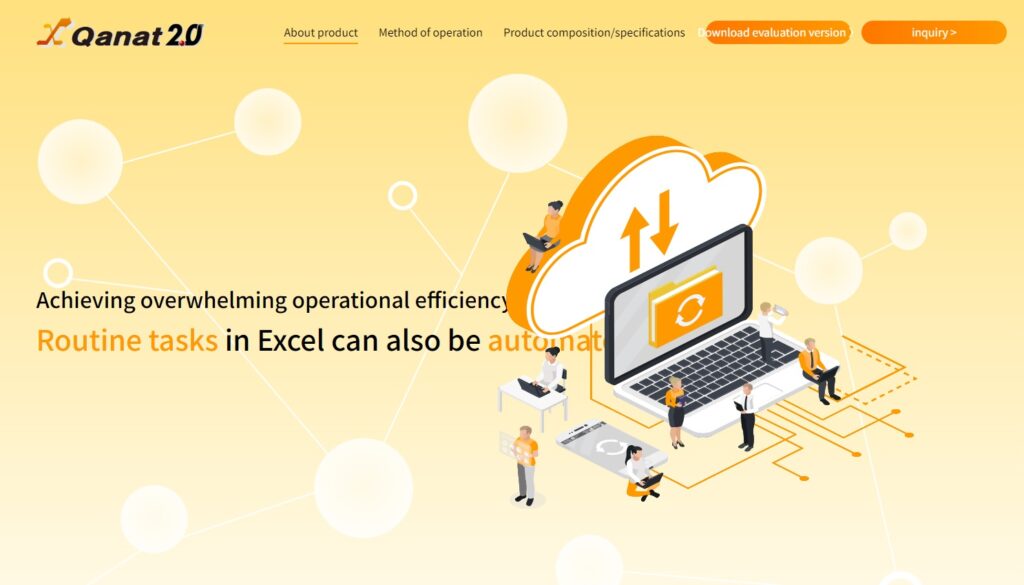
In Qanat2.0, data can be easily linked and integrated inside and outside your organization without requiring any programming knowledge.
A trigger-based scheduling function allows business automation through intuitive drag-and-drop operations.
This enables efficient operation and centralized management. It is therefore recommended for companies wishing to centralize data management and operate efficiently.
| Tool | Qanat2.0 | Installation | on-premises |
| Initial cost | Inquiry required | Monthly cost | Inquiry required |
| Free trial | can be | Official site | https://www.jbat.co.jp/ |
8. trocco
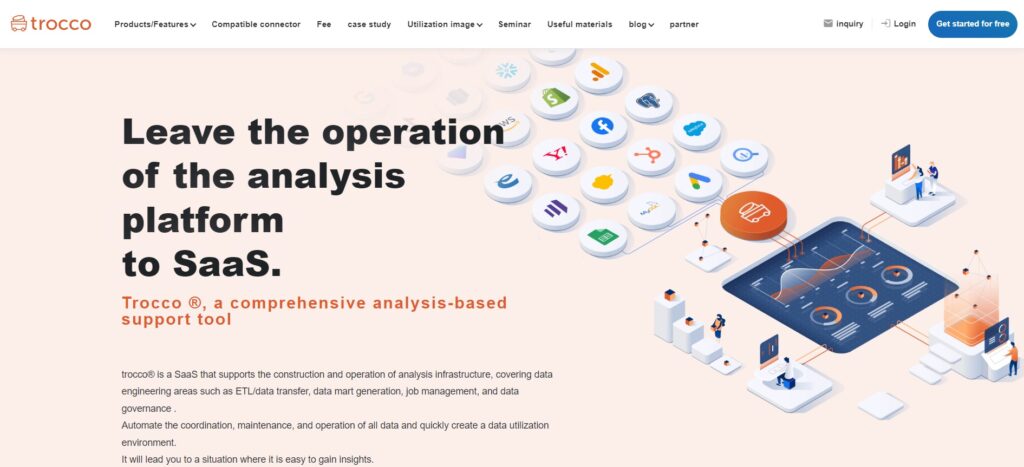
A data linkage tool provided by primeNumber Co., Ltd. is Trocco.
Automating data conversion and integration can reduce development person-hours by over 90%. In addition, the UI allows everything from configuring to transferring to be completed without any special expertise.
This is ideal for companies that need to build ETL processes or handle many different data types and need analysis work for each type.
| Tool | trocco | Installation | Cloud |
| Initial cost | 0$ | Monthly cost | 675$ |
| Free trial | can be | Official site | https://trocco.io/lp |
9. talend
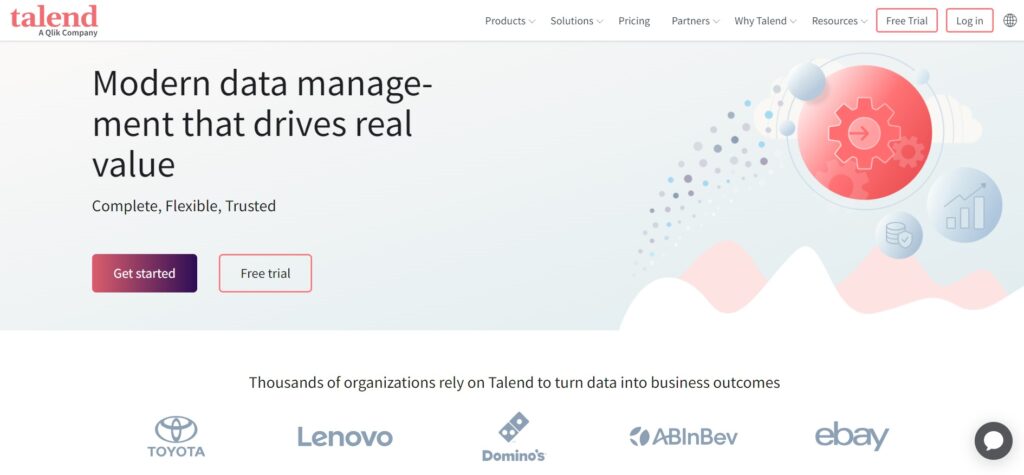
Talend is a data integration platform operated by Talend, an American company.
It facilitates smooth data exchange between different systems and services. Data can also be migrated to the cloud and linked in the cloud. In addition to supporting big data, it also supports Hadoop data processing.
In addition to coordinating and integrating data scattered within a company, it can coordinate and integrate data in the cloud and use big data, thanks to these characteristics. For companies considering a wide variety of data usage, Talend is a valuable ETL tool.
| Tool | Talend | Installation | Cloud/on-premises |
| Initial cost | Inquiry required | Monthly cost | Inquiry required |
| Free trial | can be | Official site | https://www.talend.com/ |
10. Stitch
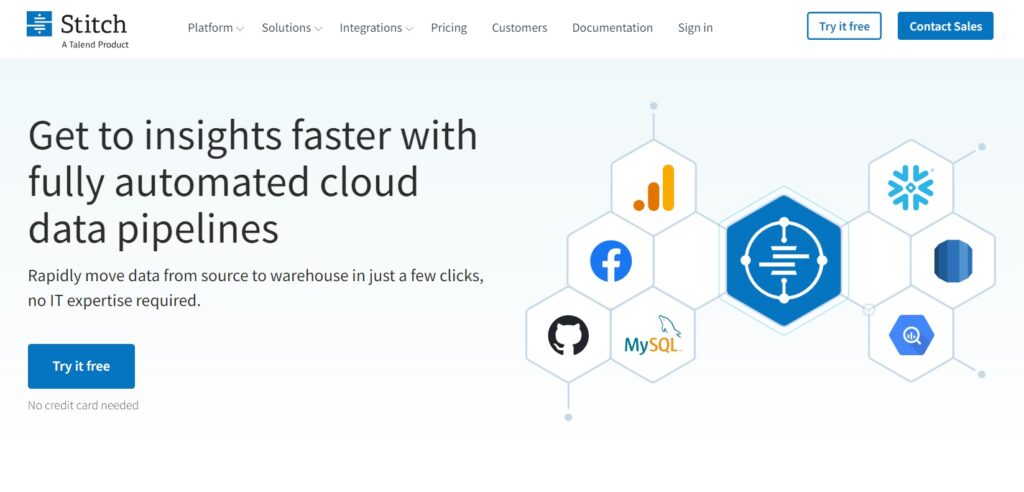
Talend provides Stitch, a cloud-based ELT service. No code is needed to replicate data from SaaS tools like Zendesk and Salesforce into your data warehouse. For companies that use multiple tools and data sources or want to aggregate data efficiently, this is an ETL tool recommended.
| Tool | Stitch | Installation | Cloud |
| Initial cost | 0$ | Monthly cost | 100$ |
| Free trial | can be | Official site | https://www.stitchdata.com/ |
Summary
ETL tools are useful for extracting, transforming, and exporting data efficiently. The right tools can improve data management, operational efficiency, and cost savings. However, the cost of implementation and operation makes it vital to choose the right tool based on your company’s data volume, budget, IT literacy, etc. Various ETL tools are available, so you must select one that best suits your company’s needs.







